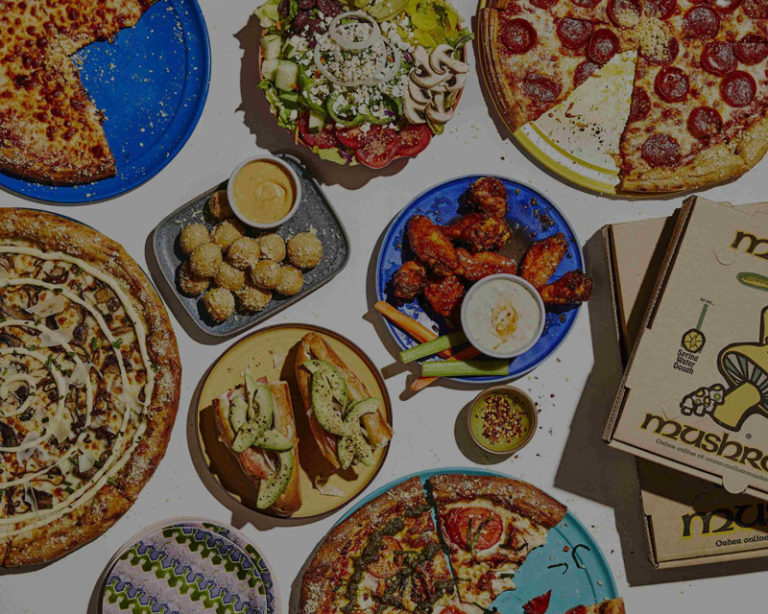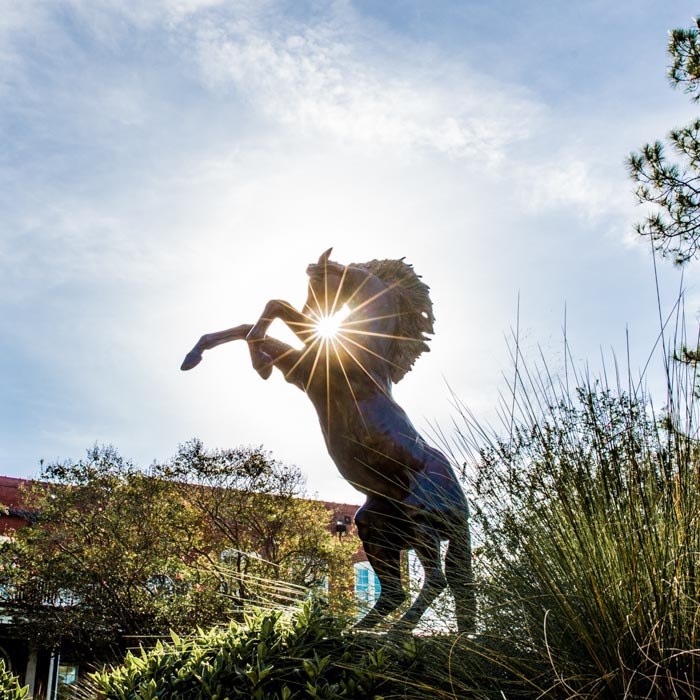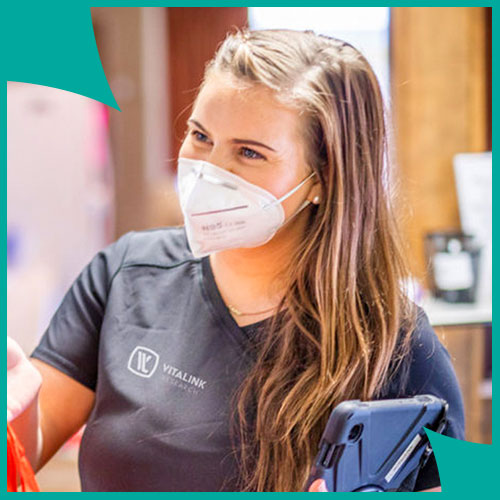Stop Worrying About Your Digital Tools And Focus On Your Thinking
There are few things more challenging throughout the branding process than naming a business or product. It takes condensing a mountain of information into a few words that perfectly capture a brand that accurately encompasses who you are, and meanwhile acts as the first impression your brand will hold onto forever. It’s the thing that needs to stick right away, because if it doesn’t, it will leave you starting at a disadvantage. Daunting, right?
One of the most important steps is choosing a name. And when it comes to this decision, some brands are lucky enough to have a great name that naturally makes sense. Occasionally, using a creator’s name, a city reference, or a piece of industry lingo appropriately falls into your lap and perfectly fits the bill. That’s great. Congratulations, if that’s the case.
But, a majority of the time, once a product or brand starts to take shape, finding the perfect name can pose a more significant challenge.
While honing in on your name, there are a few factors worth considering to help you find the one that best suits you.
Clever names lose novelty.
A pun or gimmicky name may feel fun, but can easily grow tired for both you and potential customers. The fried chicken restaurant named “Fry Me to The Moon,” or dog groomer called “Indiana Bones” might seem playful at first, but will likely grow old fast as the novelty wears off. Instead, choose a name you can grow with: one that represents you in the way you want to be seen, and gives at least some insight into what you’re offering.
Your name should be smart. It should also be fun, if that’s what you’re after. But, don’t let getting caught up in cleverness distract from what you do.
Practicality should be a guide, not an obstacle.
When you start from scratch with naming, it can be tempting to go the route of simply choosing what’s available based on domains and social handles. Those are important factors to consider, but availability shouldn’t dictate your name.
If you settle on a name you love, and the obvious domain or handle has already been claimed, use this “setback” as an opportunity for creativity. Harley Davidson’s stock ticker symbol, for example, is ‘HOG’ because Home Depot already had the obvious choice of ‘HD’. Not only is this perfectly brand appropriate, it demands more attention thanks to a touch of well placed creativity. Move a little outside the box when necessary and make implementing the right name a priority.
Brainstorm. A lot.
Word association is a fantastic exercise for naming purposes. You’ll often find that even simply writing about your brand will open up your naming possibilities.
Ask yourself “What does my brand do/create?” and write down every word you can think of around those ideas. Then visit the thesaurus (or anagram tool, or translating service) to see what else appears. You may be surprised by what comes out of the exercise.
Trends die. Good names stick around.
You probably have a “designer” friend on social media who started something called “Rosemary & Birch” or some other combination of flowers and woodland animals with an ampersand dividing them. This is not a bad brand name. But it is a trendy, mostly meaningless one. It does not give potential customers any insight to what you do, can be easily ignored in a sea of sameness, and does no work on behalf of your brand to attract business.
While it’s okay to choose a name that fits with popular culture, consider how well the name will age. Not only is it unlikely to be the best name for you, it will date your brand with all the other trend followers that started brands around the same time. Picking a name solely for its trend value will drag you down and cause you to stand out less in the long term.
Say what your brand does. Or don’t. But, maybe.
This ambiguous piece of advice has a point. There’s no magic formula for naming your brand. Sometimes, the no frills dive bar on First Avenue should just be called the “First Avenue Pub.” Sometimes, calling it “Dr. McManimum’s Drink Emporium” will work better. There’s a different fit for everyone, which is why the experimentation and exploration phase of naming is so important. What matters most is giving your brand a name that is memorable, helps tell your story, and remains relevant as your business grows.
Brand naming in action.
My agency helped name JumpSpark, a Jewish teen group previously called “The Atlanta Jewish Teen Initiative.” Obviously, the original name is not a bad one. It defines who this group is for, their affiliation, and gives you a quick idea of who they are without the need for explanation. But for a Jewish teen organization aimed at getting adolescents involved in the community and excited about their faith and culture, “Atlanta Jewish Teen Initiative” was a mouthful that wouldn’t exactly bring the young folks in droves.
To start the naming process, we spent time with program leaders and participants, went through a branding workshop with them, and brainstormed together — both separately as an agency and in collaboration with our client.
Finally landing on the name JumpSpark took a significant amount of time and work, but it clicked almost instantly as an obvious fit once we found it. A “jump spark” is defined as “a spark produced by the jumping of electricity across a gap.” It’s a connection. A conduit for something much larger. And that’s exactly what the organization does — linking Jewish teens with their community, and filling in gaps that can spread opportunities to grow.
“JumpSpark” is a successful name for a few reasons:
-It’s short and punchy: a nice departure from the clunky previous name.
-It’s easy to remember and will stick with people after hearing it.
-It has a story that connects to what the brand does, and can be quickly explained if asked.
-It’s smart without going over anyone’s head and clever without relying on a puns or gimmicks.
Your ideal name is unique to your business, and the goal is to find one you can stand behind with confidence. Give yourself time to explore and sit with your options. Experiment. Share and test it out with others. Go outside of the box. Don’t hitch your wagon to what others are doing. Make it unique, but definitive. And finally, it may sound corny, but have fun.
This is your brand. It’s going to grow and evolve with you and should be something you truly love. Take time to enjoy and embrace the process even if it feels long and arduous. You and your brand will appreciate the effort in the long run.
How David Feldman brings sweet music to brands
As seen in Emory Business Magazine
What started out as a way to help students succeed in a marketing competition ended up catapulting a small business into the big leagues.
As a student, David Feldman 08BBA, founder of the creative agency 3 Owl, excelled at team presentations and developing strategy and marketing for real-world clients. In Reshma Shah’s course Dynamics of Advertising and Promotion, Feldman worked with his classmates on a campaign for Subaru. Their campaign won first place among 12 competing universities, with Feldman one of a team of five selected to make the final presentation to Subaru executives at their headquarters.
The thrill of creating campaigns would lead Feldman to share his expertise with Goizueta students, and eventually, to start his own firm.
“Since his graduation, David has been helping me with my consultancy classes by providing teams with guidance on the development of their creative big ideas, their storylines and their digital programs,” said Shah, associate professor in the practice of marketing.
In 2013, as he was helping students, an assignment turned into an opportunity for Feldman. Mellow Mushroom, the pizza restaurant franchise, was the client. While aiding the students, Feldman did his own research. What he discovered inspired his own recommendations for Mellow’s brand and would be a big part of 3 Owl’s growth.
“I remember calling Reshma and saying, ‘Hey, the brand that’s stamped into the store is not the brand I see online. I’ve done my own audit of Mellow Mushroom’s digital presence and I have a lot of ideas on how it could be elevated to match their quirky brick and mortar brand. What I wouldn’t do to work with them,’” Feldman lamented.
To his delight, Shah offered to connect him with Dawn Law 99BBA, then senior marketing manager at Mellow Mushroom. (Law is currently CMO for Farm Burger.)
Law invited Feldman to Mellow Mushroom’s headquarters, and with just a hint of trepidation, Feldman was determined to make the biggest pitch of his early career.
“At that point, all my clients were pretty small, teams of four or five people. And it’s me and my one employee and I’m thinking, ‘Oh my goodness. What am I doing here? They’re going to laugh me out of the building,’” Feldman recalled.
But he was determined to try. Building on a history of working with clients who participate in food festivals, Feldman crafted a story that got the restaurant’s creative team humming. So much so that Feldman was invited to pitch a web redesign against more established agencies. His ability to combine web development, user interface (UI) design, and consulting won him the account. The website launched in the Fall of 2017 and exceeded expectations.
“The redesign won every restaurant website award, including restaurant website of the year from multiple sources,” Feldman said. “The ROI was huge. We helped Mellow roll out their online ordering, their first catering platform. It was a really awesome project.”
Thanks to the Goizueta network and preparation, Feldman said the win opened doors to clients all over the country. “That was a turning point for my agency,” he said.
Why 3 Owl?
Feldman has increased the size of his team and taken 3 Owl to the next level. The agency’s name stems from Feldman’s philosophy of creating brands.
“I like owls because they’re wise, but more important is the metaphor of seeing in the dark,” explained Feldman. “People don’t know what they don’t know. We help illuminate what our clients are missing. Even our website has a light mode and dark mode, so you can turn the lights on and off.”
But bringing clients into the light requires time. Feldman is a firm believer in storytelling. Crafting a story often requires a lot of discovery, employing marketing methods and ensuring all stakeholders are on the same page, especially where goals and dreams for the organization are involved. The culmination of this research ensures the essence of a business shines through in the branding.
For those seeking a quick transaction, this type of research-intensive approach is not always a good fit.
“Once, we had a client part ways with us because he said we were too strategic, which is the best compliment I’ve ever gotten,” Feldman said. But for the clients who understand the value of a strong brand, storytelling is essential.
Feldman said he learned a lot about discovery from former adjunct lecturer Joey Reiman’s class while at Goizueta. “Storytelling is based in some sort of truth, whether it’s the organization’s history or something historical or something in their vision that we can really lean into.”
The result is a firm on the move.
Greatest hits
When he’s not strategizing with brands, Feldman is volunteering his time by indulging in his second love, music.
As an undergrad, he spent hours in the Schwartz Center playing jazz and classical guitar. After graduation, a stint in corporate America, and then working for his father’s clinical research company, Feldman missed the artistic and creative.
He stumbled on the ATL Collective in its early days and watched as local bands covered the Beatles’ “Abbey Road” album. Feldman cornered the founder to learn more about the organization and, not surprisingly, wanted to help shape its brand. (He even played in a few early shows.)
Ten years later, ATL Collective connects and empowers Atlanta’s musical community through building relationships, fostering education and promoting preservation. It aims to connect musicians with wider fan bases and provide the resources necessary to sustain musical careers.
For Feldman, this is an opportunity to connect his love of music with the creativity of business. Since that first fateful meeting, he’s not only played in some of the early sessions, but has helped build the brand for the organization and even produced a show at a Delta Air Lines hangar.
“We were covering albums and playing bigger rooms. Variety Playhouse fits 1,200. We went from really small to really big, covering more genres, bringing together more artists,” Feldman said. As the Collective grew, he had an epiphany — “everything we do is in service of the Atlanta music scene. Would we be better off – would we thrive – as a non-profit?”
“Last October we became a 501c3, which made so much sense. Leading with our mission has been a game-changer for ATL Collective and the opportunities it affords us.”
In addition, the Collective is focusing more on the artist and finding ways to support the musicians, from mental health workshops to monthly speaker events.
The shows are big productions, Feldman noted. “The best part is getting these musicians access to new fans, and the public still gets to benefit, but now you’re actually seeing a show knowing that the musicians are getting paid really well. Your money is getting invested right back into the music community.”
From aiding musicians to guiding student teams at Goizueta, Feldman finds joy in all of his connections.
“I still come back at least twice a year to lecture, and I’m always happy to have coffee with students and talk to them about marketing careers,” Feldman said. “Having built an amazing team at 3 Owl, I’m very, very grateful for the experiences I’ve had at Emory and beyond. It feels like that group project, except I get to present and make a career of it. This really feels like I’ve come full circle.”
WP Engine spotlights Great American Cookies’ website
Helping VitaLink Accelerate the Search for a COVID-19 Vaccine
Years of Investments in Brand Development and Digital Infrastructure Led to an Overnight Success that Caught the Attention of Moderna and Operation Warp Speed
On July 27, 2020, in the depths of the COVID-19 pandemic, the NIH’s National Institute of Allergy and Infectious Diseases (NIAID) and biotech company Moderna announced that they had begun phase 3 trials of mRNA-1273, a candidate COVID-19 vaccine. According to CNN, on that day the vaccine or a placebo was given to 1,290 people, of a planned 30,000 volunteers overall.
Just five weeks earlier, longtime 3 Owl client VitaLink was selected by Moderna and NIAID as one of the networks of clinical trials sites that would conduct the testing. VitaLink immediately contacted 3 Owl and asked for our help in volunteer recruitment. We had to move fast, but we were ready.
With a 72-hour sprint, we launched an online recruitment campaign. Over the next four weeks, we optimized online efforts, produced and placed a television ad campaign, and exceeded the original recruiting goals by 800%. The full campaign was so successful that the chief advisor and the COO of Operation Warp Speed — the U.S. government’s interagency program charged with accelerating development of a COVID-19 vaccine — both came to VitaLink to learn from our recruiting methods.
It was an overnight success for VitaLink, one for which we’d been helping them prepare for several years.
Rapid Recruitment for Science at Speed
It’s no secret that scientists, biotech companies, public health officials, and governments around the world have been doing everything they can to speed up development of a safe and effective vaccine for COVID-19 while maintaining standards of volunteer protections and scientific validity. Every day’s delay means more lives lost.
Candidate vaccines have been identified in record time. According to a July 31 report by the WHO, 139 candidates are in preclinical evaluation, and 26 are in clinical trials. mRNA-1273 is the first in the U.S. to reach phase 3 trials.
Moderna and the NIAID reached out to several trial sites across the country to begin recruitment and preparations for the trials. Nationwide, they needed to recruit 30,000 volunteers, and they needed to do it quickly. Rapid recruitment could actually save lives.
VitaLink wanted to be a significant part of the solution. They originally told us they wanted to recruit at least 400 volunteers. 3 Owl leaped into action to help.
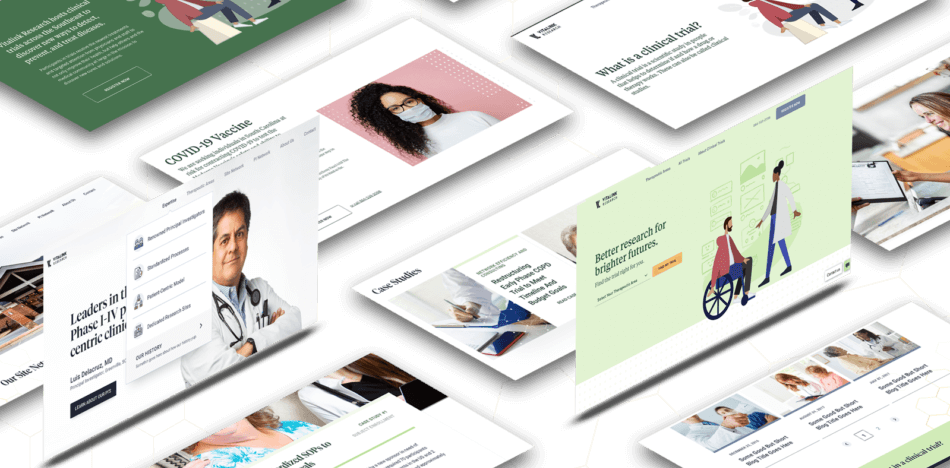
Building a Nimble Brand
Fortunately, 3 Owl had a long history with VitaLink, which is headquartered in Greenville, South Carolina and is now one of the world’s largest privately owned networks of clinical research sites.
We had also already created a robust brand for VitaLink, complete with automated design systems that allowed us to produce brand-consistent marketing materials at speed. And we had already developed a robust digital infrastructure with a fully integrated digital experience platform (DXP) to drive their online brand experience.
One recommendation we had made to VitaLink 18 months earlier proved especially foresighted. Like most clinical trials companies at the time, VitaLink originally had a single website that attempted to serve all stakeholders: scientists, biotech and pharmaceutical companies, government agencies, and volunteers. While the first three audiences had largely overlapping needs, volunteers had very different needs and generally did not have the scientific sophistication expected by the other audiences.
We concluded that, by trying to serve these very different audiences, the VitaLink site wasn’t serving either very well, so we recommended creating two separate websites. One would speak to scientists, biotech companies, and government agencies. It would emphasize scientific methodology, biotech ROI, and streamlined logistics.
The second would be a patient-facing site, dedicated solely to volunteer recruitment and communication. It would be consistent with the overall VitaLink brand, but slightly softer and warmer, with simpler language and effortless connection. Messaging would emphasize hope, meaningful contributions, and quality of life.
VitaLink agreed with our recommendations, so we got to work.
When we were done, VitaLink’s two websites were each better aligned with their audiences. We had also simplified their backend infrastructure and streamlined their internal processes. We of course didn’t know that a pandemic was ahead, but we knew that, whatever crises or opportunities might come, VitaLink now had the infrastructure they needed to respond quickly and decisively.
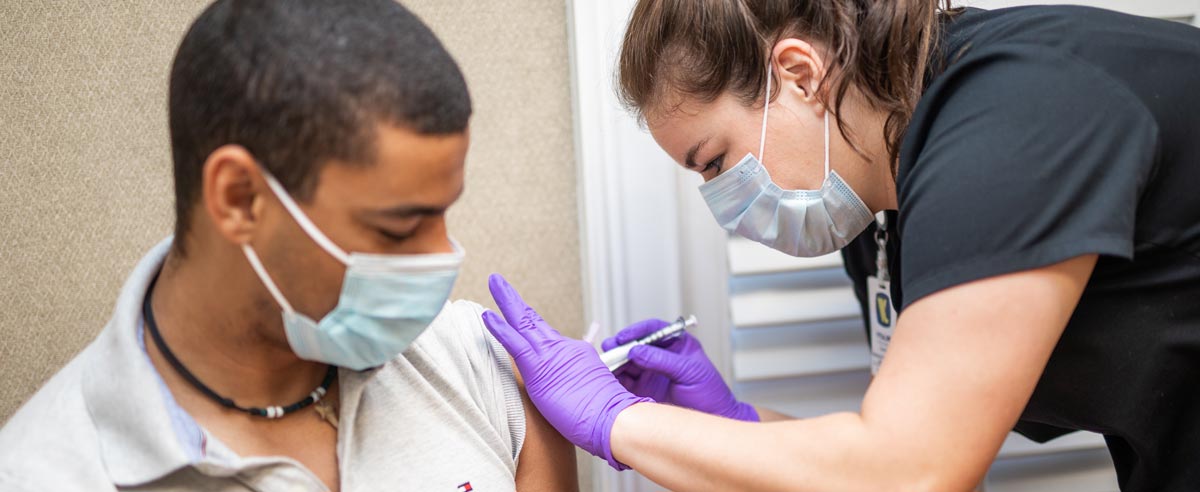
A 72-Hour Sprint
After we got the call from VitaLink about the Moderna trial, we did a 72-hour sprint to start recruiting volunteers.
In those first 72 hours, we built a dedicated landing page for the study on the patient-facing website. We also purchased the domain name CovidVaccineSC.com and redirected it to the landing page, for enhanced SEO.
On the backend, we set up ChatBot and six live support people to manage volunteer traffic. We integrated ChatBot, CallRail, and Mailchimp into a master spreadsheet so that every call and submission were automatically added, and volunteers received immediate followup emails with additional study information.
We also launched an online advertising campaign. We researched other COVID-19 ads on social media and defined target audiences. We then built 20 variations of creative for the campaign so that we could test and quickly optimize our spend. These included ads targeted by demographic, social channel, and placement. We optimized daily by using each day’s analytics as a new baseline from which to iterate for the next day’s ads.
We could do all this so rapidly because we had already developed the patient-facing site, the integrated digital infrastructure, and the automated design systems. We had long ago prepared the way to launch large recruitment campaigns at speed.
Exceeding Recruitment Goals
With online advertising funneling traffic to the patient-facing website and underlying digital infrastructure, VitaLink was soon exceeding its weekly recruitment goals.
The original recruitment goal was 400 volunteers recruited in four weeks. Early success led to a stretch goal of 2,000 interested participants.
Within two weeks, we had recruited 1,000 potential volunteers and were on-pace to recruit 2,000 in four weeks.
Early in the third week, we had already recruited 1,700 potential volunteers. We created a lookalike ad target from this list. This list had the lowest cost per conversion as it was hyper-targeted based on our own data from the previous two weeks.
During the third week, we also wrote, filmed, edited, and placed a broadcast television commercial, following rigorous safety protocols to keep all involved safe from infection during the filming. We also secured fast-tracked approval for the ad from the Institutional Review Board (IRB). The ad aired on South Carolina television stations for one week and helped bring in an additional 1,200 potential volunteers.
By the end of the fourth week, we had recruited 3,200 new potential volunteers, which, after qualification, is likely to translate to 5% of the national total sought by the NIAID and Moderna. We had exceeded the original recruitment goal by 800% and even the stretch goal by more than 50%.
Operation Warp Speed Takes Notice
These numbers all caught the attention of Operation Warp Speed, a joint program of the Department of Health and Human Services, the CDC, the NIH, the Biomedical Advanced Research and Development Authority (BARDA), and the Department of Defense.
The program sent their chief advisor, Moncef Slaoui, PhD, and their COO, General Gustave F. Pernahttps to VitaLink to learn from our recruitment efforts and apply them to the Coronavirus Prevention Network, which is recruiting volunteers nationally for all government-sponsored COVID-19 vaccine trials.
The work we did in partnership with VitaLink could now potentially help accelerate the trials of additional candidate vaccines. Effective recruitment will continue to be a key factor in saving more lives and ending this pandemic sooner.
A Brand Pivot for VitaLink
Seeing an opportunity to make an important contribution during this pandemic, VitaLink is now poised to conduct additional trials and become a leader in the fight against COVID-19. Their previous work has often focused on diseases of the pulmonary system, so, scientifically, they were already well positioned to study a respiratory virus. We’re now in the midst of helping them redefine their brand to encompass a new focus on prophylactics, vaccines, and treatments for respiratory viruses.
As always, we’re building it all with the infrastructure that will allow them to move nimbly in response to crises and opportunities. And as new trials require more recruitment, we’re ready to help.
It’s been very gratifying to all of us at 3 Owl to be a part of this. We’re not doctors or scientists. We can’t cure anyone or do the most critical work on the front lines of this crisis. But through VitaLink, we have the opportunity to support the people searching for a way to end this pandemic. That feels pretty good.
Why Branding Takes So Long And Why It’s Worth The Wait
When my agency tells a client their branding or rebranding process will take months, they often ask me, “Why does it take so long?” When we were new and hungry for clients, it was sometimes hard to insist that, no, we could not whip up a quick logo, a color palette and some typography guidelines. And no, we could not complete it in two weeks.
But I did say no. I knew that rush jobs wouldn’t serve the success of my clients or my agency. Instead, I’ve worked hard at answering the question. Most prospective clients then understand the value and support the process. Some don’t. One client parted ways with us because he said we were “too strategic,” but his complaint was one of the best compliments we’ve ever received.
A brand is a valuable asset, a capital investment in intellectual property. A 2017 study by intellectual capital firm Ocean Tomo found that 84% of the value of S&P 500 companies was in intangible assets. They estimated that one-quarter of that value was attributable to the companies’ brands.
PROMOTEDhttps://3abfeb3575643c5548b4efe0c4795d3d.safeframe.googlesyndication.com/safeframe/1-0-38/html/container.htmlhttps://3abfeb3575643c5548b4efe0c4795d3d.safeframe.googlesyndication.com/safeframe/1-0-38/html/container.html
As technology continues to multiply opportunities for people to experience your brand, it’s more important than ever to tell your story consistently and responsively across hundreds of touch points. This requires a lot of careful planning, but if your brand may represent 20% to 25% of your company’s value, isn’t it worth the time to do it right?
Not Just A Pretty Logo
A brand is much more than a name, a logo and a color palette. It’s an expression of your mission, values and vision. A plan to achieve your goals and ambitions. An experience that connects you with your customers, clients, employees, investors and other stakeholders. A system and the tools to build that connection over time.
A brand is not just a pretty logo. It’s a plan to support your core business goals and grow the value of your company.
Things That Take A Long Time
1. Facilitating Internal Alignment
Before any of the work of creating your brand can begin, your agency needs to understand your organization, marketplace and goals. This is not just for the agency’s benefit.
A successful brand is built on a foundation of full internal alignment around your identity, goals and vision. It’s normal, even healthy, to have internal disagreements at the beginning, but it’s important to resolve these differences before any branding decisions are made.
During discovery, your agency will facilitate discussions and help you find consensus. Their outside eyes can offer perspectives that bring all stakeholders together. This takes time, but your agency needs that clear direction to inform its creative decisions. And your organization needs unified internal support to bring your new brand to life.
2. Creative Brief
The creative brief distills all the insights and decisions of the research and discovery phase — the consensus understanding of your identity, market position and goals.
It’s a critical document, and it’s important to take the time to get it right. The brief will guide everyone on the agency’s creative team: designers, writers, photographers, strategists, etc. It’s a unifying document for your internal team as well, informing your decisions as the branding process proceeds.
3. Creative Exploration
Even after the creative brief is finalized, your agency shouldn’t rush to draw and draft. To ensure the brand is unique and authentic to your organization, they will first look for inspiration in everything that informs your identity.
My agency once scanned 100-year-old documents from the archives of a university we were rebranding, drawing on their long history for visual direction. For a music nonprofit, we did a deep dive into the hype sticker culture for vinyl records, a key element of their mission.
Whatever the cultural, historical, artistic, scientific and other contexts of your undertaking, your agency should take the time to explore them well. They’ll then synthesize their initial ideas into a concrete creative direction — colors, imagery, foundational language, etc. — that’s well aligned with the creative brief.
4. Creating Brand Deliverables
Notice how much work has been done prior to beginning this step. Here’s where an agency designs a logo and its variations, chooses typography, writes a tagline and key language, and produces all the rest that customers will see.
Crafting quality brand assets does take some time, but when an agency completes the earlier work thoroughly and well, this phase should go smoothly. There is always an iterative process of feedback, revisions and tweaks, but even the first draft should feel 85% there.
5. Creating Tools
You have your logo, your tagline and all the other brand assets. So you’re done, right? Not if your agency is preparing your brand to succeed. Now it’s time to develop the tools you need to build your new brand.
Some are familiar static documents: brand guidelines and a voice and tone guide. These are important, but they’re not enough. Today, a branding agency should also develop digital tools that empower your team to create brand-consistent marketing collateral across all the touch points your brand can reach in the digital age.
These can be simple blog or email templates, or more sophisticated digital tools that make it easy to generate branded webpages or social media posts. Developing this technology takes more time, but it equips you to build your brand efficiently and effectively, scaling rapidly in a technology-driven world that’s moving faster every day. (And you won’t be forever dependent on your agency to produce every piece of branded content.)
The Payoff Of Patient Persistence
In Interbrand’s annual Best Global Brands report, which informed the Ocean Tomo study of S&P 500 companies, the authors found “enduring proof that investment in long-term brand-building enables businesses to thrive over time and survive market volatility.”
Building an effective brand takes some patience and persistence. You’re aligning your organization around a shared identity, goals and vision. You’re creating a strategy that will position your organization to achieve your goals. You’re investing in your organization’s value and ambitions. It’ll take a while, but it’s worth the wait.
What is Strategy? (At 3 Owl)
With the growing prevalence of slapping “strategic” in front of positions and companies, it can be difficult to differentiate between those simply using the word for its buzzworthyness and actual implementation of deeper strategy into work. The concept of “brand strategy” can feel like an ambiguous idea. Really, the concept of being “strategic” can be confusing thanks to the over-saturation of the word. Strategic partnerships. Strategic solutions. Strategic platitudes abound.
Because of said ambiguity and overuse, we thought it would be valuable to define brand strategy at 3 Owl and how we consider the concept when working with brands to help them grow and evolve.
Putting just a few words to it is a challenge, but our basic definition of strategic branding could be “Discovering the truths at the core of a brand, creating a narrative around those truths, and telling their story in the most interesting way possible using design, tech, and creativity to stand out from the competition while achieving success for the client.”
Most branding agencies will read that and say “Yeah. Us too.” Which is fine. All restaurants have the same goal of serving good food.
To better define what strategic branding looks like for us, let’s use a tool we commonly implement in our brand workshops in some form or fashion. When working with new clients, it’s valuable to define some simple parameters by establishing what this brand is and what they are not. It’s useful to understand what someone doesn’t want to be as much as what they do.
As we continue to evolve in our definition of strategy at 3 Owl, here are some things we know it is, and a few it’s definitely not.

Strategic branding is…
Based in truth and backed with research.
Strategy helps answer the ‘who’, ‘what’, and ‘why’ of a project while further defining a problem. Who are we talking to? What are we promoting? Why does this business exist? But behind those big questions is an even bigger ‘Why’ which explains how you got there. You’ve pinpointed a key insight to drive the creative direction – why is it right? Why should someone believe you?
A successful creative strategy is backed with research and proof behind every decision within it. Not only does this help prove to the client and team the project is headed in the right direction, the work will be better informed and distributed, which works to everyone’s benefit.
More than a brief.
In creative fields there’s sometimes this idea that a strategist tucks away with research in a laboratory until they find the right combination of insights to come out and say “I’ve discovered the target market!” Yes, research and the brief are vital parts of building a strategic brand, but the implementation of strategic thinking throughout the entirety of the project makes it a success.
A good brand strategy should act like a script supervisor on a movie set. The same way they are tasked with ensuring continuity, interpreting a script, and maintaining awareness of everything happening on set, a strategy (and whomever may be charged with implementing said strategy) have similar responsibilities. It’s the map for a project. The north star. Another cliche about guidance and direction. It should be referenced often to ensure the story makes sense and continually points back to solving the greater business and creative challenge.
Mutually beneficial for both client and creative team.
Providing value for the client is a given, but when creatives are given the opportunity to solve business problems in a way that excites and inspires their work, the whole project runs a better chance for success. Passionate business owners and entrepreneurs with a vested interest and belief in what they do tend to produce more successful businesses.
The same goes for executing creative work. When a creative team is presented with a project backed by valuable information to shape their creative ideas as opposed to a problem with no direction, the odds of key insights shaping into effective and beautiful executions increase. And your team will be happier. Thoughtful insights lead to thoughtful work.
Consistent and confident while allowing flexibility.
A brief without sound strategy behind it can quickly kill a project. One overly prescriptive and bloated with unnecessary information takes up too much room to let ideas grow. Too vague leads to assumptions and misguided executions. Smart brand strategy provides insights in an interesting way that matters. A 50-page research document may be helpful in some instances, but a thoughtful strategy should boil and reduce that doc down to a delicious sauce that works on multiple dishes, know what I mean? It’s the base to be built on – if it’s overwhelming or underdeveloped, it sets up the rest of the project for confusion.
Defines success for every individual project.
Some consistent criteria for success can be held onto – the final product should always be beautiful, websites should work flawlessly, brand voice should be strongly defined, etc. However, success looks different from client to client and guidelines should be established at the beginning of a project to define what a successful end result looks like.
Our agency was recently approached to help design and develop an app. The project was certainly something we are capable of and interested in and, added bonus, the client was ready to open their checkbook without asking a lot of questions. But, we really like asking questions.
We learned early on the idea hadn’t been tested for viability or vetted for effectiveness in the market. We liked the client, we liked the idea, but we (1) didn’t want to waste someone’s money or (2) waste our team’s time on an idea that may not be successful. So, instead of taking a big paycheck to dive into a project without direction and a ton of cash, we took far less money to consult on a viability study and solidify the idea for testing. We shifted the definition of success to proving the idea is possible instead of trying to force it through the process where success was simply defined as “make it work”. Give yourself practical, defined goals for success at the beginning of a project and create a plan to follow through and achieve that goal.

Not self-serving.
Do you need to spend six figures on VR technology for a brand or do you just really want to? Does that tagline convey what the brand does or does it just sound cool? Creativity for the sake of being creative or ideas for the sake of ideas does no favors to clients or final results for an agency. Pretty things that don’t work are just pretty. See point #1 for further details.
Not just a logo.
Don’t get me wrong, your logo is important. But a logo and color palette does not make a brand. These are important elements that should be considered as part of the larger story backed by strategic research. We often try and avoid a la carte design or naming projects at 3 Owl because there are so many other factors involved in those processes that need to be thought through and understood before the final product can be successful. A logo should match the story the brand is telling. As should the language, website, collateral, events, and every other touchpoint involved. A brand should work holistically to form a greater narrative and a logo is an important character in that narrative, not the only one.

This is simply the start for us in our approach to strategy. Every project looks different and takes on new challenges which require flexibility and a willingness to adapt. But the undeniable necessities of well-informed research, thoughtful insights, and a shared definition for success remain no matter the client or ask. We never put pen to paper before knowing why we’re doing it.
